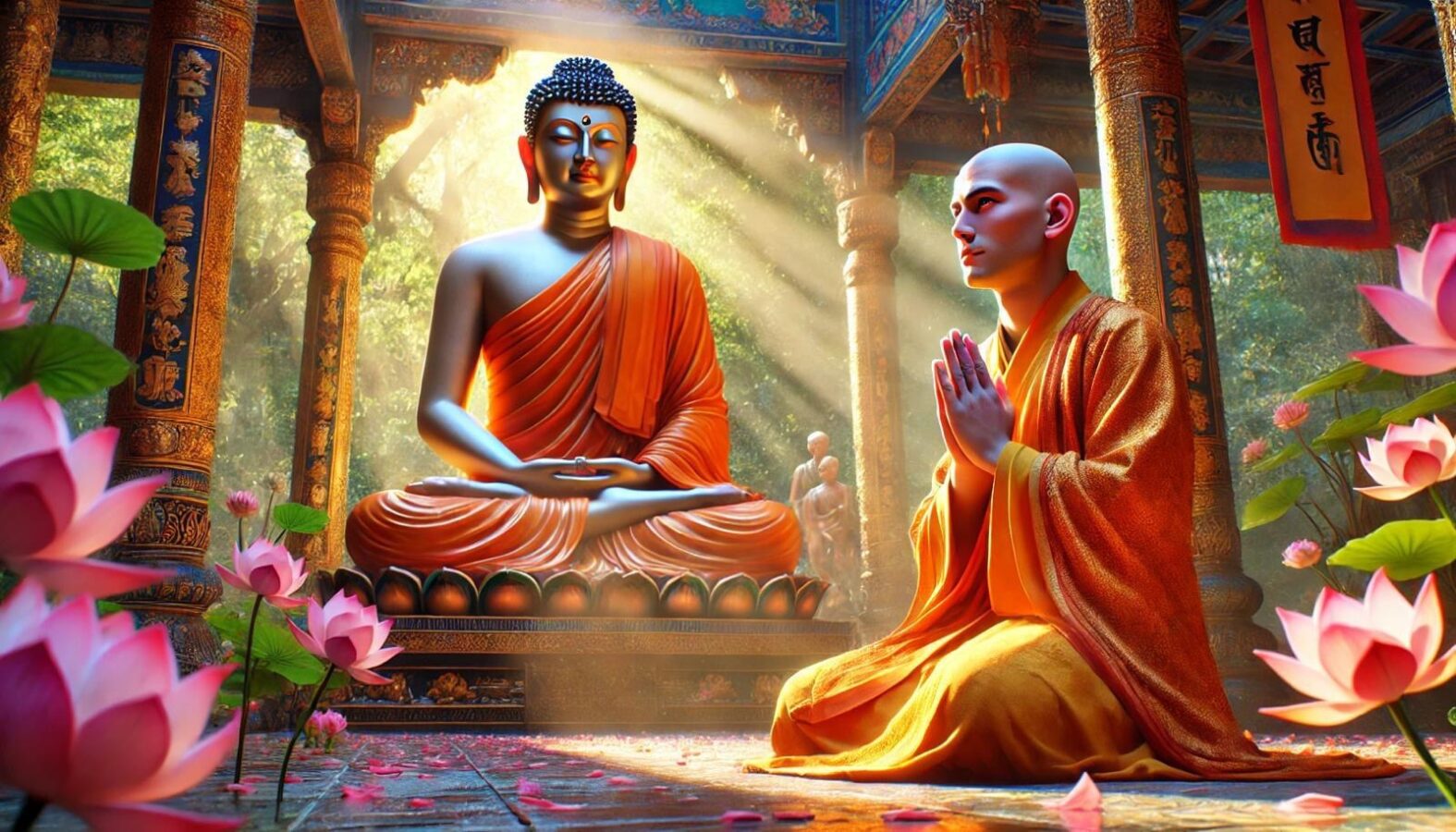
Date: 04/12/2025 04/13/2025
Location: Star River Meditation Center
Teacher: Yunquan Huang
Dharma Talk
The Visit of Matted-Haired Moḷiya
Once, the Buddha was residing at the Kalandaka Bamboo Grove Monastery, north of Rājagaha, the capital of the Kingdom of Magadha.
One day, a non-Buddhist ascetic named Moḷiya arrived at the monastery. Because he habitually coiled his hair into a large knot, people called him “Matted-Haired Moḷiya.”
After paying respects to the Buddha, Moḷiya was asked by the Buddha where he had come from. He replied:
“Gautama! I have been traveling from place to place, visiting gatherings of various ascetics, brahmins, and wandering renunciants who engage in discussions and teachings in the forests.”
“Moḷiya! Did you gain anything beneficial from them?”
“Gautama! I learned a great deal from their debates and disputes with one another.”
“Moḷiya! For a long time, ascetics, brahmins, and wandering renunciants of various traditions have held different views. They constantly engage in debates, attempting to refute others and achieve victory.”
“Gautama! What kind of teachings do you give your disciples so that they may instruct others without bringing disgrace to the Tathāgata, nor be subject to criticism and dispute from others?”
“Moḷiya! I teach them ‘clarity and liberation.’ By teaching others in this way, they neither bring disgrace to the Tathāgata nor invite dispute and criticism from others.”
“Gautama! By what method do your disciples practice to attain clarity and liberation?”
“Moḷiya! The Seven Factors of Enlightenment (bojjhaṅgā) lead to clarity and liberation when cultivated and frequently practiced.”
“Gautama! What practice leads to the fulfillment of the Seven Factors of Enlightenment?”
“Moḷiya! The Four Foundations of Mindfulness (satipaṭṭhāna) lead to the fulfillment of the Seven Factors of Enlightenment when cultivated and frequently practiced.”
“Gautama! What practice leads to the fulfillment of the Four Foundations of Mindfulness?”
“Moḷiya! The Threefold Right Conduct (body, speech, and mind) leads to the fulfillment of the Four Foundations of Mindfulness when cultivated and frequently practiced.”
“Gautama! What practice leads to the fulfillment of the Threefold Right Conduct?”
“Moḷiya! The discipline of the six sense faculties leads to the fulfillment of the Threefold Right Conduct when cultivated and frequently practiced.”
“Gautama! What practice leads to the fulfillment of the discipline of the six sense faculties?”
“Moḷiya! When the eyes see something agreeable, pleasing, desirable, and enchanting, one does not develop delight, attachment, infatuation, or clinging. When the eyes see something disagreeable, unpleasant, or painful, one does not become fearful, resentful, disdainful, or angry. One does not cling to what is pleasant, nor does one reject what is unpleasant—one’s mind remains undisturbed. The same applies to hearing, smelling, tasting, touching, and thinking. By maintaining discipline over the six sense faculties in this manner, and through consistent practice, one fulfills the Threefold Right Conduct.
How does practicing the Threefold Right Conduct lead to the fulfillment of the Four Foundations of Mindfulness?
A noble disciple who has heard much of the true Dhamma reflects in solitude, in the forest, or under a tree: ‘Unwholesome actions of body, speech, and mind bring bad results. If I commit such actions, I will regret them in the future. Others will reproach me, and the Master will admonish me. My reputation will be tarnished, and after death, I may fall into the hell realms.’ By reflecting in this way and constantly reminding oneself, one removes unwholesome bodily, verbal, and mental actions, cultivating the Threefold Right Conduct.
How does practicing the Four Foundations of Mindfulness lead to the fulfillment of the Seven Factors of Enlightenment?
Moḷiya! One practices mindfulness by contemplating the body, feelings, mind, and mental objects with clear awareness. With continuous mindfulness practice, one cultivates the Enlightenment Factor of Mindfulness (sati). Once mindfulness is well established, one develops the Enlightenment Factor of Investigation of Dhamma (dhamma-vicaya). When this is well developed, one cultivates the Enlightenment Factor of Energy (viriya). Through diligent practice, one experiences joy and cultivates the Enlightenment Factor of Rapture (pīti). When rapture is well developed, the body and mind become calm, and one cultivates the Enlightenment Factor of Tranquility (passaddhi). With well-developed tranquility, one attains deep concentration, cultivating the Enlightenment Factor of Concentration (samādhi). When concentration is perfected, the mind becomes single-pointed and free from all craving and distress, leading to the cultivation of the Enlightenment Factor of Equanimity (upekkhā) until its full development.
How does practicing the Seven Factors of Enlightenment lead to clarity and liberation?
Moḷiya! One cultivates the Enlightenment Factor of Mindfulness with detachment, renunciation, and cessation, progressing toward equanimity. Through this path, one develops and perfects the Factors of Investigation, Energy, Rapture, Tranquility, Concentration, and Equanimity, ultimately attaining clarity and liberation.
In this way, Moḷiya, by practicing one factor after another, one can cross from the shore of affliction to the shore of liberation.”
When the Buddha had finished speaking, Matted-Haired Moḷiya became free from dust and impurities, attaining the pure Dhamma vision. At that moment, he saw, realized, understood, and entered the Dhamma. No longer dependent on others for guidance, he resolved his doubts. Firm in the true Dhamma, free from fear, he stood up from his seat, adjusted his robes respectfully, and requested ordination from the Buddha.
The Buddha consented.
Not long after his ordination, Matted-Haired Moḷiya attained final liberation and became an Arahant.

